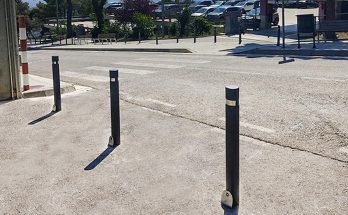VISION AND MISSION
Identification of the organization’s vision and mission is the first step of any strategic planning process. One can not overemphasize the importance of a clear vision and mission; none of the subsequent steps will matter if the organization is not certain where it is headed.
ENVIRONMENTAL SCAN
Once the vision and mission are clearly identified, The environmental scan, performed within the frameworks of the Five Forces Model and SWOT, analyzes information about organization’s external environment (economic, social, demographic, political, legal, technological, and international factors), the industry, and internal organizational factors. The labor market projections provided on this site are most valuable for the environmental scan.
GAP ANALYSIS
Organizations evaluate the difference between their current position and desired future through gap analysis. As a result, a university can develop specific strategies and allocate resources to close the gap (CSUN strategic planning leadership retreat, April 1997), and achieve its desired state.
BENCHMARKING
Measuring and comparing the organisations operations, practices, and performance against others is useful for identifying “best” practices. Through an ongoing systematic benchmarking process campuses find a reference point for setting their own goals and targets.
STRATEGIC ISSUES
Organisation determines its strategic issues based on (and consistent with) its vision and mission, within the framework of environmental and other analyses. Strategic issues are the fundamental issues the organization has to address to achieve its mission and move towards its desired future.
EMERGENT STRATEGIES
Unpredicted and unintended events frequently occur that differ from the organization’s intended strategies, and the organization must respond. Emergent strategy is “a pattern, a consistency of behavior over time.
EVALUATION OF STRATEGY
Periodic evaluations of strategies, tactics, and action programs are essential to assessing success of the strategic planning process. It is important to measure performance at least annually (but preferably more often), to evaluate the effect of specific actions on long-term results and on the organization’s vision and mission (Rowley, Lujan, & Dolence, 1997). The organization should measure current performance against previously set expectations, and consider any changes or events that may have impacted the desired course of actions.
STRATEGIC THINKING
With time, people in the organisation routinely make their decisions within the framework of the organization’s strategic vision and mission. Strategic planning becomes an organizational norm, deeply embedded within the organization’s decision-making process, and participants learn to think strategically as part of their regular daily activities (Lerner, 1999). Strategic thinking involves “arraying options through a process of opening up institutional thinking to a range of alternatives and decisions that identify the best fit between the institution, its resources, and the environment.



